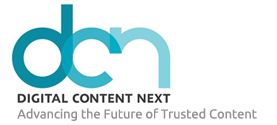In an era where media consumption shapes opinions and influences culture, the spotlight is on media businesses being more inclusive and diverse in their content and practices to better serve audiences. DCN’s new Digital Media Audience Diversity Study finds that content that strikes a chord with diverse audience segments leads to heightened audience engagement. Such content can cement a company’s position in a fiercely competitive landscape and facilitate monetization.
The study examines the attitudes, values, and behaviors of different generational segments and racial, ethnic, and identity (REI) cohorts in the context of digital media. To accomplish this, a survey was conducted among 1,500 respondents ― proportionally across Gen Z, Gen Y, and Gen X segments and each segment included Black, Latino, Asian, LGBTQ+, and White populations.
Representation matters
The findings uncover the perspectives and preferences of how respondents engage with digital media content, their subscription practices, their relationship to ad-supported content, and their views on representation and portrayal.
In this regard, the study underscores the importance of incorporating inclusivity, diverse representation, and authentic portrayal in media content.
- Black respondents exhibit a heightened awareness of diverse creators and producers, actively seeking television content where they see themselves represented.
- The LGBTQ+ community expresses a deep-seated sense of underrepresentation and the need for more authentic narratives in media.
- Asian audiences are eager to move beyond secondary roles in entertainment content and advocate for realistic and inclusive portrayals.
- Black and LGBTQ+ audiences exhibit increased loyalty to media brands that respect their representation, sourcing content from creators who mirror their experiences and featuring talent that reflects their identity.
Impacts of mobile and social media usage
Generational nuances are exposed regarding the impact of mobile and social media usage on mental health. Gen Z and Gen Y are more attuned to the adverse effects of excessive social media and mobile use, particularly on self-esteem and anxiety. LGBTQ+ individuals, irrespective of their generation, also express heightened concerns over the negative implications of their digital engagements.
Willingness to pay for content
Diverse audiences exhibit varying tendencies toward paying for digital content. Gen Z and Gen Y are notably more willing to invest in digital content than Gen X, hinting at the shifting media consumption paradigms. Black and Latino cohorts emerge as more willing spenders on digital content than other REI groups.
Unlocking media benefits
The study reveals the appeal of on-demand access to content remains a consistent top benefit, across generational and Racial, Ethnic, and Identity (REI) cohorts.
- The desire to watch what one wants when one wants is the foremost advantage of subscribing to video content.
- Anywhere access emerges as the predominant advantage of subscribing to audio content.
- Digital print media garners favor for its capacity to offer knowledge acquisition, personalized curation, consistent content updates, and unwavering quality.
DCN’s Digital Media Audience Diversity Study uncovers a spectrum of insights into the dynamics of digital media engagement. Understanding the subtleties within these findings across generation and Racial, Ethnic, and Identity (REI) cohorts is pivotal for content companies to engage with specific audiences effectively. Beyond profits, this engagement nurtures creativity, fosters inclusivity, and aligns media companies with the evolving ethos of a diverse and dynamic media future.
Full research report for DCN members only. Register to or login to download (on desktop see top right corner of page, on mobile the top center). Download buttons will appear at the top and bottom of the page.


















